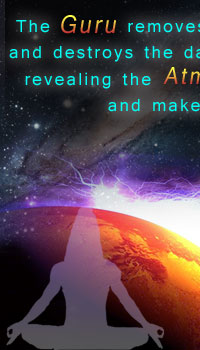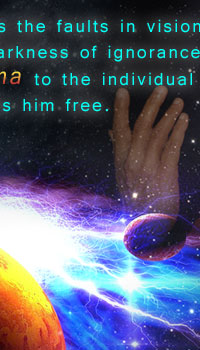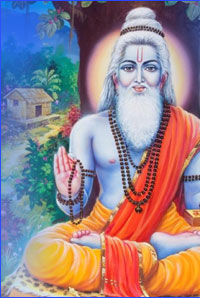Grow in Love
– The Message of Guru Poornima
The festival of Guru Poornima is one of the most significant celebrations in the Sai calendar. Over the years, Bhagavan has used this occasion for the unfurling of many landmark events of His mission, be it the opening ceremony of the first college campus of Sri Sathya Sai University in 1971, or the inauguration of the Sri Sathya Sai Water Supply Project, Stage-I in 1995, or the announcement for the establishment of Sri Sathya Sai Institute of Higher Medical Sciences, Whitefield, in 1999, or the revelation that He is in fact the Shiva-Shakthi Avatar on earth in 1963. And on every one of these momentous days He blessed the devotees with a profound discourse.
Many wonder what is so significant about Guru Poornima? Why do we celebrate this festival? And how should we observe this day? Bhagavan has given clear answers to all these and much more. Let us now recapitulate this immortal message of the Sadguru, the Supreme Teacher, through a few simple questions.
Q) Why do we celebrate Guru Poornima?
Guru Poornima is dedicated for offering gratitude to the guru.On this day, the Moon, which is the presiding deity of the mind, is full, clear, cool and bright! It has no blemish or dullness which diminishes its glow. The guru too is pictured and praised on this occasion as unblemished, bright and affectionate. He is full of devotion with a sense of surrender to God. He is tolerant and truly peaceful. He is the living example and embodiment of the virtues he desires his disciples to develop.
The guru that initiates one into chanting a particular mantra is a Dheeksha Guru, while the guru who transforms and elevates the personality of his pupils is a Siksha Guru. It is this latter guru that is reverentially praised in thousands of ways in the holy texts. He removes the faults in vision and destroys the darkness of ignorance. He reveals the Atma to the individual and makes him free.
 |
 |
 |
The sacred festival of Guru Poornimais dedicated to such gurus. Poornima (the full moon day) celebrates the fulfilment that is the goal of all life.
[Divine Discourse - July 27, 1980]
Q) Why is this day also called Vyasa Poornima?
Sage Vyasa was born with a great urge for spiritual upliftment and he entered into deep study and sadhana (spiritual practice)even as a child. He acquired such divine wisdom and glory that he is identified with Narayana (God) Himself.
He stands out as the Lokaguru (World Teacher) for he codified the Vedic hymns and prepared the great Vedantictext ‘Brahmasutras’, besides the epic commentaries of the Veda-vedanta (teachings based on Upanisadicphilosophies), Mahabharata and the Srimad Bhagavatham.
He is called ‘Veda Vyasa’ because of his service to the students of the Vedas which defied understanding since they were countless and fathomless. It is for this reason it is said Anantho vai Vedah – The Vedas are limitless.
 |
 |
 |
Vyasa helped mankind to earn peace. Therefore, Vyasa refers to the person who has elaborated and expanded the knowledge of truth, that is to say, the universal eternal energy.
Even Vyasa can only show you the road. You have to traverse it alone. He gives you a mantra (a sacred word or formula) which you repeat; though you may not know its meaning, it will act as the purifier of your mind.
Humanness is holy; it is neither mean nor low. It has the status of God, though clouded and contaminated. For this faith to strike deep roots in our minds and to keep us fixed in that belief, a guru is needed. Vyasa is the first guru who demarcated the path and the goal. That is why he is associated with the Poornima day.
[Divine Discourses - July 24, 1964 and July 27, 1980]
Q) Who is our true Guru?
 |
Gu means darkness and ru means light. Guru is one who removes darkness through light; he imparts wisdom which roots out ignorance. Render unto him as much homage as he deserves, but not more. You repeat the slokha:
Guru Brahma gurur Vishnuh,
Gurur dhevo Maheswarah,
Gurussaakshaath Parabrahma,
Thasmai Shri Gurave namah
This is usually interpreted as indicating that the Guru is Brahma, Vishnu and Maheshwara (The trinity of Godhead) and that he is the visible Parabrahma(God).
But this hymn can be understood in a nobler manner: "Brahma is the Guru, Vishnu is the Guru, Maheshwara is the Guru, truly, Parabrahma is the Guru."
Pray to the God within you, the Maheshwara, the Vishnu, the Brahma, or the Parabrahma Principle to reveal Itself. Accept that as the Guru and you will be illumined. The Gayatri mantra is a prayer for the progressive upsurge of intelligence so that Truth may be grasped by the seeker. Subordinate the mind to the pure intelligence which is but a reflection of the God within. Then, you have the Guru of Gurus as your guide.
Man is consumed by time; God is the Master of Time. So, take refuge in God. Let Him be your Guru, your path and your Lord. Adore Him, obey His commands, offer Him your grateful homage, and hold Him fast in your memory. This is the easiest way to realise Him as your own reality. This is the one and only way.
[Divine Discourses - July 18, 1970 and July 2, 1985]
Q) How should we celebrate this day? What is Swami’s message for us?
Guru Poornima is sacred for many reasons:
This day, the seeker who suffers from identification with the false objective world
is initiated into the reality of the 'Unseen Motivator' within him;
This day, those who have no urge to tread the spiritual path
are inspired to seek the bliss which that path will confer;
This day, aspirants are helped to achieve the consciousness of the One,
which is known by many Names and Forms, in various languages and lands.
 |
 |
 |
Guru Poornima must be celebrated with prayer and penitence as that alone can cleanse the heart and not by feasting or fasting which affects only the body. This is the day when you decide to become masters of your senses and intellect, emotions and passions, thoughts and feelings, by sadhana (spiritual discipline). Even during dhyana (meditation), the ego will obstruct you.
Nivedita asked for advice from Vivekananda to gain one-pointed focus during meditation. "Do not allow Margaret Noble to come between you and God," Vivekananda said. Margaret Noble was herself. "‘Nivedita’ means ‘Offering’," Vivekananda explained and added, "Offer yourself fully to God."
This total dedication cannot emerge from scholarship. The scholar is polluted by ego; he delights in putting pros and cons against each other; he raises doubts and disturbs faith. They mix the secular and the worldly with the spiritual and the other-worldly. They worship God in order to extract worldly gain. But prayers to God have to be for spiritual progress.
Embodiments of Divine Love! If you want to understand Divinity, you should have the firm faith that Divinity is everywhere. There is no place or object without God. Guru Poornima means full moon without any defect or lacuna. Moon is nothing but mind. When the mind is completely perfect, it sheds light.
Guru Poornima is not performed by circumambulation and offerings to the Guru. What is the real offering? It is the offering of one's love. To know that God exists everywhere is circumambulation. If you understand these terms, every day is Guru Poornima. There is only one Guru, that is God, and there is no other Guru. Contemplate on that Guru.
Therefore, engage yourselves in sadhana (spiritual practices)without delay. Cultivate virtues; be free from evil habits, thoughts, words and deeds. Grow in love and greet Nature with love. This is the way to Ananda (bliss). This is the message for Guru Poornima.
[Divine Discourses - July 27, 1980 and July 14, 1992]
Dear Reader, how did you like this excerpt from His Divine Discourse? Please share your reflections with us by writing to h2h@radiosai.org mentioning your name and country. Thank you for your time.
- Heart2Heart Team





